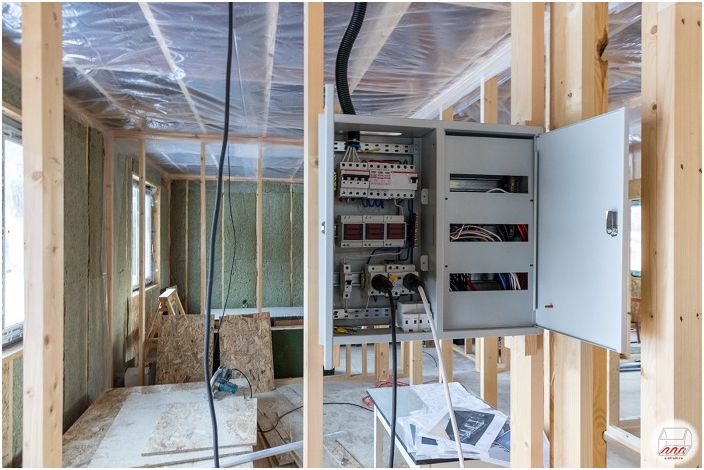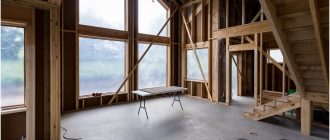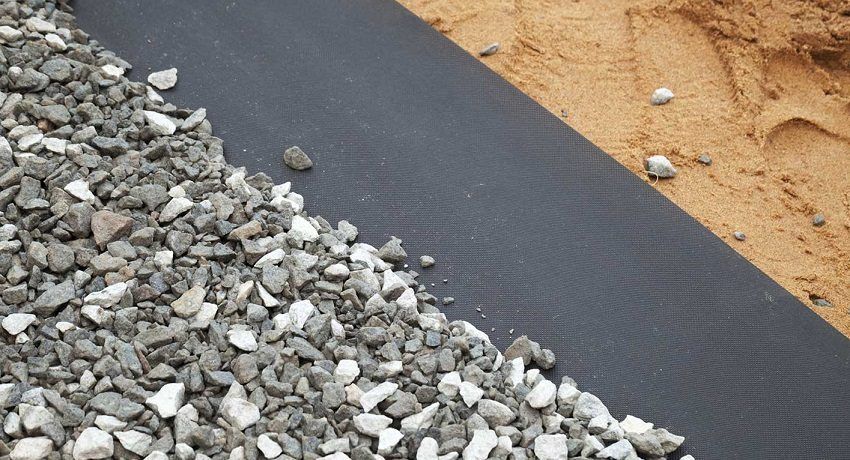The ceiling is a horizontal partition that separates the individual floors of the building. In addition to the function of dividing the floors, it plays another very important role. Its task is to transfer both its own and engineering loads. In some cases, it strengthens the entire structure of the building or transfers part of the loads exerted by the roof on vertical elements such as partitions and load-bearing walls. Large heat losses in the room, cold air that blows from the ceiling are the result of mistakes made in the process of thermal insulation of the ceiling. Due to the fact that warm air rises to the top, heat loss through the ceiling reaches 20%. Measures aimed at insulation should be carried out during the construction phase. However, if this could not be done or the old thermal insulation material has lost its properties, then the work will have to be done again.
Ceiling insulation in a private house must be carried out professionally and in a planned manner. Despite the fact that the insulated attic is different from the floor on the basement, in practice there is no ideal technology for carrying out the work. It all depends on your expectations, financial capabilities, as well as the materials and methods used. What are the ways to insulate the ceiling and what materials are used when performing such work? These are the main questions asked by the owners who are faced with the need for thermal insulation of the ceiling. During insulation, it is important to do the work correctly, the insulation should not damp, fungus should not multiply on the surface and condensate should not accumulate.
Ceiling parameters and insulation – what you need to know?

Each ceiling has its own characteristics, regardless of the chosen installation system. Durability is key because the floor has to withstand enormous loads. People and utility equipment create a load of 150 kg per square meter. It is important that the ceiling is rigid to ensure safety and prevent plaster from falling on the lower floor. Comfort of use is ensured by the ability to suppress noise. Another very important parameter is thermal insulation..
Often ceilings separate residential floors where there is not much temperature difference, but in the case of flat roofs and ceilings dividing a basement or attic, this is important. With poor-quality insulation of the floor, heat loss will occur, the room will not be efficiently heated. This is an important step because it saves a lot of money on heating..
Ceiling insulation – which insulation to choose

Various materials are presented on the construction market, which are designed for insulation of ceilings in private houses..
If you have to insulate the ceiling, the types of building materials for such work should be considered approximately as follows:
- Mineral wool. Building material with a fibrous structure, characterized by vapor permeability. Depending on the main component used in production, it can be stone or slag. Glass wool is also on the market. The insulation is environmentally friendly, perfectly retains heat. During the installation process, it is strictly forbidden to compress the insulation material. The thickness of the insulation is selected depending on the tasks. The thickness of the insulation of the ceiling of private buildings is 15 cm or more, for apartments – 5 cm. During the installation of mineral wool, it is important to create high-quality waterproofing. If mistakes are made at this stage, the cotton wool will get wet, due to which the insulation will lose 40-50% of its thermal insulation properties annually.
- Ecowool. Cellulose is used in the production of building materials. The main component of ecowool is paper and cardboard waste. The insulation is distinguished by a porous structure, due to which vapor permeability is provided, it is resistant to decay, does not emit toxic substances, and is not subject to combustion. Ecowool is distinguished by a high coefficient of thermal insulation, it is also a good sound insulator. Due to biostability, the building material is protected from the effects of microorganisms and parasites.
- Expanded clay. Inexpensive, durable insulation with good sound insulation properties. To ensure good thermal insulation characteristics, the layer of bulk insulation should be 20-40 cm. The only drawback of expanded clay is that it absorbs moisture, therefore, when it gets wet, it gains weight, as a result of which collapse can occur. When insulating with expanded clay, it is necessary to create an additional substrate, since a lot of crumbs and dust are formed from the material.
- Styrofoam. Reliable insulating building material. Inexpensive, lightweight, non-toxic, foam – a guarantee of excellent thermal insulation. Among the minuses – fast flammability, low fracture strength. Also, when installing this insulation, it is important to create good ventilation. Moisture and dampness can cause mold to form on the surface.
Another way is to insulate the ceiling with sawdust. This material is practically not used in its pure form; they are mixed with other materials to improve the thermal insulation properties. The moisture resistance of the building material also improves, it perfectly resists the effects of mold, is not attractive to rodents and insects. Hardware stores offer a large selection of bioprotective and antiseptic agents.
Ceiling insulation scheme

Since each insulation has a different shape and structure, the installation methods are different. Consider the popular ways:
- If the insulation is mounted from the attic side, then you can choose any insulation, since it does not need to be additionally fixed. An important point is the tight overlap of the plane so that there are no gaps. To a greater extent, this applies to bulk materials. When choosing a heater, you need to select building materials with the required level of thermal insulation. Among the materials in demand are mineral wool or expanded clay.
- When carrying out work from the inside, it is required to create a special suspended frame. The simplest solution is to fill the space between the base and false ceilings with insulating material. For such purposes, you can use any heat insulator, which is pushed through the frame hangers, then the profiles are installed in place. This method is recommended if you can make the base ceiling lower so that there is a distance for fixing the insulating material..
To increase the thermal insulation properties of any type of ceiling, foil-clad polyethylene foam is used. It is fixed on the surface with double-sided tape, then suspensions and a frame are strengthened through it. With this method, it must be borne in mind that the laying of the material is carried out in the gaps formed inside the frame. In the process of laying materials with different rigidity (expanded polystyrene, polystyrene), gaps are often formed. To seal the gaps, you need to use polyurethane foam. The best insulation of the ceiling of a house is often made using foam materials. They are not as popular as expanded clay or mineral wool, since special equipment is needed to carry out the work..
Insulation of the attic ceiling – step by step
The attic ceiling can be insulated in several ways. Ceilings can be concrete or wood. For this, you can use mineral wool. Insulation of concrete floors in an unused attic is carried out with a layer of cotton wool 20 to 25 cm thick.Also, in the case of insulation of a concrete floor in an attic, the same procedure is applied, distributing the cotton wool over its entire surface, sometimes in two layers, given that the layers of cotton are tightly adhered to each other friend.
For work to improve the thermal insulation properties of the ceiling, you can use expanded polystyrene. It is a cheap and effective solution. When using expanded polystyrene, the volume of the ceiling space may decrease, but this does not matter, because it does not have to be spacious or comfortable. The work must be carried out so that the insulation takes up as little volume as possible, is effective, that is, does not allow significant heat loss from the heated room. When carrying out work from the inside, it can be done using scraps of stone wool, which are called granules. They fill all corners tightly, preventing heat from escaping..

